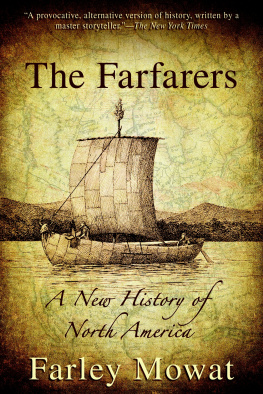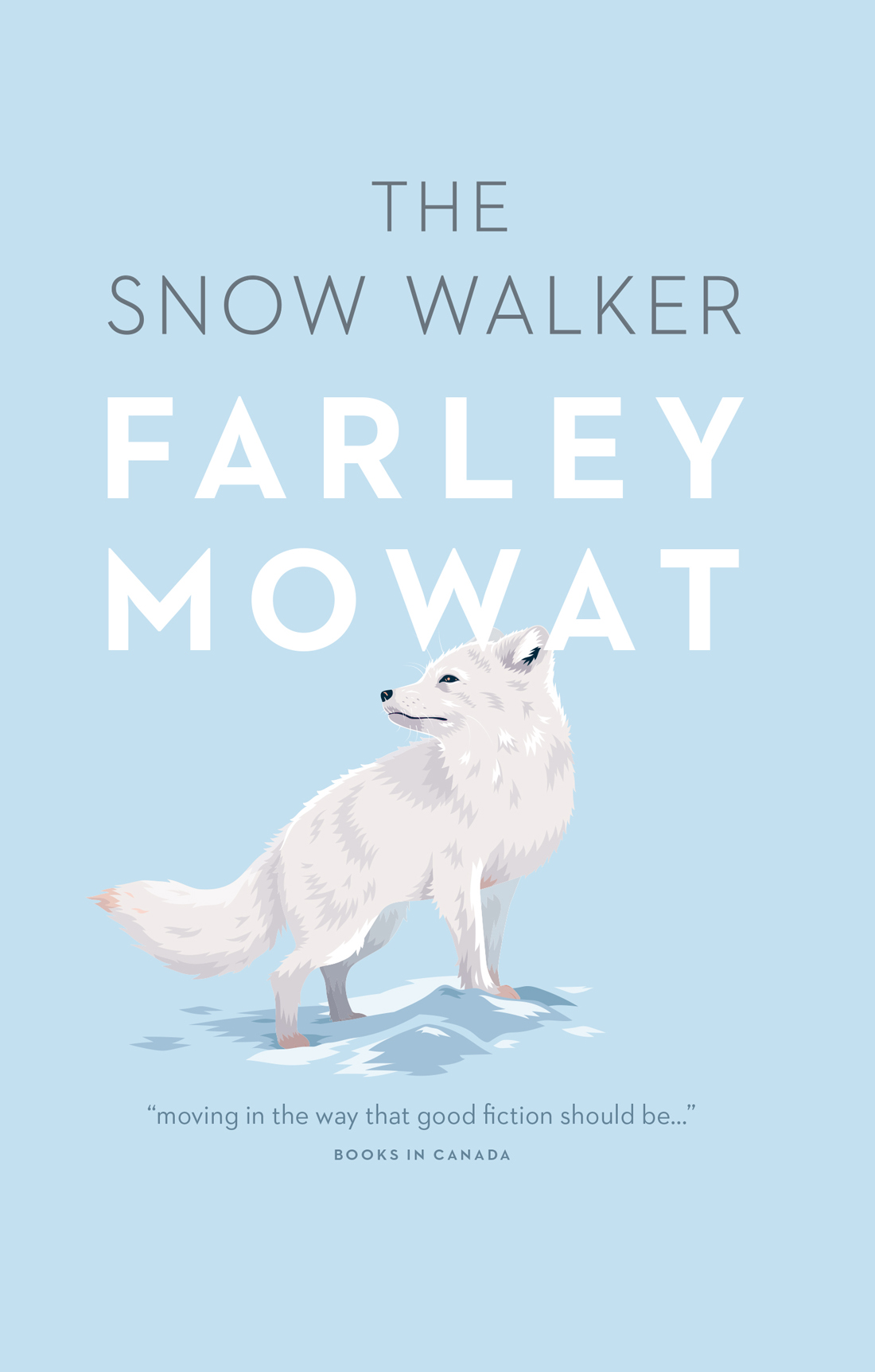Praise for the snow walker
Farley Mowat re-establishes himself as that figure honored in both primitive and advanced communities, the master storyteller. His tales are compelling, though the unifying thread running through them traces a grisly line Mowat is superb at creating mood, personalities and relationships.
San Francisco Examiner-Chronicle
Excellent These are stories that have a deep emotional content; they are spiritually moving in the way that good fiction should be
Books in Canada
Powerful and unusual. The Snow Walker is a book about a harsh environment and about human beings extended into that rare realm of heroism. The tales are told in a style that is both entertaining and illuminating.
Boston Herald Advertiser
Farley Mowat has often been described as one of Canadas greatest storytellers and The Snow Walker is splendid evidence of why he deserves that title It is engrossing reading.
Vancouver Sun
Passionate, harsh, with a mythic density tales so simple and strong you read them again to make sure you havent been tricked into feeling a story in your stomach for a change.
New York Times
Where there is merit in this book it is in no small part due to the unremitting, gentle but implacable persistence of Lily Miller. Where the work falters it is because sometimes I neglected to listen to her.
...................
Copyright 2014 by Farley Mowat Ltd.
All rights reserved. No part of this publication may be reproduced, stored in a retrieval system or transmitted, in any form or by any means, without prior permission of the publisher or, in the case of photocopying or other reprographic copying, a licence from Access Copyright, www.accesscopyright.ca, 1-800-893-5777, info@accesscopyright.ca.
Douglas & McIntyre (2013) Ltd.
P.O. Box 219 Madeira Park, BC, CANADA V0N 2H0
www.douglas-mcintyre.com
Cataloguing data available from Library and Archives Canada
978-1-77100-085-7 (paper)
978-1-77100-086-4 (ebook)
Cover illustration by Brian Tong
Typesetting by Cyanotype
We gratefully acknowledge financial support from the Government of Canada through the Canada Book Fund and the Canada Council for the Arts, and from the Province of British Columbia through the BC Arts Council and the Book Publishing Tax Credit.

Snow
_______
When Man was still very young he had already become aware that certain elemental forces dominated the world womb. Embedded on the shores of their warm sea, the Greeks defined these as Fire and Earth and Air and Water. But at first the Greek sphere was small and circumscribed and the Greeks did not recognize the fifth elemental.
About 330 B.C., a peripatetic Greek mathematician named Pytheas made a fantastic voyage northward to Iceland and on into the Greenland Sea. Here he encountered the fifth elemental in all of its white and frigid majesty, and when he returned to the warm blue Mediterranean, he described what he had seen as best he could. His fellow countrymen concluded he must be a liar since even their vivid imaginations could not conceive of the splendour and power inherent in the white substance that sometimes lightly cloaked the mountain homes of their high-dwelling Gods.
Their failure to recognize the immense power of snow was not entirely their fault. We who are the Greeks inheritors have much the same trouble comprehending its essential magnitude.
How do we envisage snow?
It is the fragility of Christmas dreams sintering through azure darkness to the accompaniment of the sound of sleigh bells.
It is the bleak reality of a stalled car and spinning wheels impinging on the neat time schedule of our self-importance.
It is the invitation that glows ephemeral on a womans lashes on a winter night.
It is the resignation of suburban housewives as they skin wet snowsuits from runny-nosed progeny.
It is the sweet gloss of memory in the failing eyes of the old as they recall the white days of childhood.
It is the banality of a TV advertisement pimping Coca Cola on a snowbank at Sun Valley.
It is the gentility of utter silence in the muffled heart of a snow-clad forest.
It is the brittle wind-rush of skis; and the bellicose chatter of snowmobiles.
Snow is these things to us, together with many related images; yet all deal only with obvious aspects of a multifaceted, kaleidoscopic and protean element.
Snow, which on our planet is a phoenix continually born again from its own dissolution, is also a galactic and immortal presence. In the nullity of outer space, clouds of snow crystals, immeasurably vast, drift with time, unchanged since long before our world was born, unchangeable when it will be gone. For all that the best brains of science and the sharpest of the cyclopean eyes of astronomers can tell, the glittering crystals flecking the illimitable void are as one with those that settle on our hands and faces out of the still skies of a December night.
Snow is a single flake caught for an instant on a windowpane. But it is also a signboard in the solar system. When astronomers peer up at Mars they see the Red Planet as a monochromatic globeexcept for its polar caps from which gleaming mantles spread toward the equatorial regions. As the antelope flashes its white rump on the dun prairies, so does Mars signal to worlds beyond it with the brilliance of our common sun reflected from its plains of snow.
And so does Earth.
When the first star voyager arcs into deep space, he will watch the greens and blues of our seas and lands dissolve and fade as the globe diminishes until the last thing to beacon the disappearing Earth will be the glare of our own polar heliographs. Snow will be the last of the elementals in his distant eye. Snow may provide the first shining glimpse of our world to inbound aliens if they have eyes with which to see.
Snow is crystalline dust, tenuous amongst the stars; but on Earth it is, in yet another guise, the Master Titan. To the south it holds the entire continent of Antarctica in absolute thrall. To the north it crouches heavily upon mountain ranges; and the island subcontinent of Greenland literally sags and sinks beneath its weight. For glaciers are but another guise of snow.
Glaciers are born while the snow falls; fragile, soft and almost disembodied but falling steadily without a thawing time. Years pass, decades, centuries, and the snow falls. Now there is weight where there was none. At the surface of an undulating white waste, there seems to be no alteration, but in the frigid depths the crystals are deformed; they change in structure, interlock with increasing intimacy and eventually meld into black, lightless ice.
Four times during Earths most recent geological age snow fell like this across much of the northern half of our continent and in Europe and Asia too. Each time, snow altered the face of almost half a world. A creeping glacial nemesis as much as two miles thick oozed outward from vast central domes, excoriating the planets face, stripping it of life and soil, ripping deep wounds into the primordial rock and literally depressing Earths stone mantle hundreds of feet below its former level. The snow fell, softly, steadily, until countless millions of tons of water had vanished from the seas, locked up within the glaciers; and the seas themselves withdrew from the edges of the continents.
There is no natural phenomenon known to us that can surpass the dispassionate power of a great glacier. The rupturing of Earth during its most appalling earthquake cannot compare with it. The raging water of the seas in their most violent moments cannot begin to match it. Air, howling in the dementia of hurricanes, is nothing beside it. The inner fire that blows a mountain to pieces and inundates the surrounding plains with floods of flaming lava is weak by comparison.




![Farley Mowat - People of the Deer [Paperback]](/uploads/posts/book/52958/thumbs/farley-mowat-people-of-the-deer-paperback.jpg)



